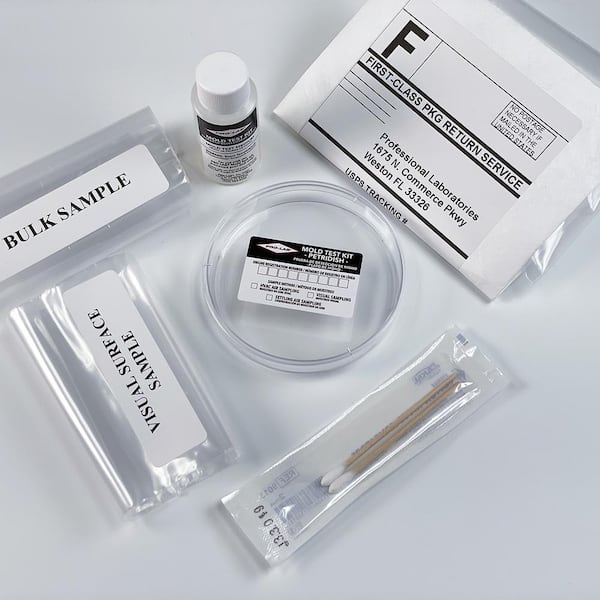Mycotoxin testing Services: A Secret Part in Risk Administration Methods
Mycotoxin testing Services: A Secret Part in Risk Administration Methods
Blog Article
How Mycotoxin Testing Aids Prevent Contamination and Protect Food Materials

Mycotoxin screening is a vital practice in the food market, offering as a frontline defense against contamination by unsafe toxins created by mold and mildews. Via the application of sophisticated methods like High-Performance Fluid Chromatography (HPLC) and Fluid Chromatography-Mass Spectrometry (LC-MS), food producers can precisely identify and quantify mycotoxin levels in farming items.
Understanding Mycotoxins
Comprehending mycotoxins starts with identifying that they are poisonous second metabolites generated by particular mold and mildews, which can infect farming items. These metabolites are not crucial for the development or recreation of the fungis however can have serious ramifications for human and animal health and wellness. Mycotoxins are typically discovered in staple crops such as corn, wheat, barley, and nuts, where they can proliferate under specific conditions of wetness and temperature.
There are a number of types of mycotoxins, each created by different fungal types. Fusarium varieties create trichothecenes and fumonisins, both of which are linked with different acute and persistent health concerns.

Risks of Mycotoxin Contamination
The risks of mycotoxin contamination are diverse, posturing considerable dangers to both food safety and public health and wellness. Mycotoxins, hazardous substances produced by specific types of fungi, can contaminate a wide variety of farming products consisting of cereals, nuts, spices, dried out fruits, and coffee.
Financial impacts are one more significant problem. Polluted plants can result in considerable financial losses for farmers and food producers as a result of decreased returns and the requirement for costly decontamination procedures. Moreover, worldwide trade can be considerably prevented as countries impose stringent mycotoxin regulations to protect their populations, bring about declined deliveries and stretched trade relationships.
Environmental aspects such as environment change exacerbate the danger of mycotoxin contamination. Variants in temperature level and humidity can produce beneficial conditions for fungal growth, boosting the probability of contamination occasions. Therefore, understanding and mitigating these threats are important for guaranteeing the security and honesty of international food products.
Methods of Mycotoxin Evaluating
Accurately recognizing mycotoxin contamination in farming items is essential for guarding public wellness and maintaining food security requirements. Different methods are utilized to detect and measure mycotoxins, each offering certain benefits and limitations.
High-Performance Liquid Chromatography (HPLC) is an extensively used approach because of its high sensitivity and precision. It includes dividing mycotoxins from other materials in an example, making it possible for exact quantification. Similarly, Liquid Chromatography-Mass Spectrometry (LC-MS) combines liquid chromatography with mass spectrometry to supply in-depth molecular info, making it specifically beneficial for recognizing multiple mycotoxins at the same time - Mycotoxin testing Services.

Gas Chromatography-Mass Spectrometry (GC-MS) and Thin-Layer Chromatography (TENDER LOVING CARE) are additionally employed, each with one-of-a-kind applications. GC-MS works for volatile mycotoxins, while TLC uses a simpler, economical alternative for preliminary testing.
Benefits of Routine Examining
Regular screening for mycotoxins in farming products supplies numerous benefits, significantly adding to public wellness and food safety and security. By determining contamination early, normal testing aids protect against the distribution of hazardous foods, consequently minimizing the risk of mycotoxin-related ailments among customers. This positive approach not only safeguards human health and wellness however also boosts the general high quality of food materials.
Different countries and regions have actually established strict limitations for mycotoxin levels in food and feed. Adhering to these limitations through normal testing ensures that distributors and producers fulfill lawful requirements, thereby staying clear of fines and profession obstacles.
Furthermore, regular mycotoxin testing can cause substantial financial benefits. Early detection of contamination enables prompt treatment, lowering potential losses my company from extensive contamination. Carrying out normal screening methods can also minimize recall expenses and associated responsibilities, which can be monetarily ruining.
Furthermore, regular testing offers important data that can notify much better farming practices and storage conditions. By understanding patterns of contamination, producers can adopt preventive steps, thus contributing and reducing future risks to the sustainability of the food supply chain.
Implementing Testing Protocols
Executing reliable mycotoxin screening protocols is essential for making certain the safety and security and high quality of agricultural items. Each phase has to be inspected to pinpoint where mycotoxin contamination is most likely to take place.
When critical control factors are identified, picking proper testing techniques is important. Usual techniques consist of enzyme-linked immunosorbent assay (ELISA), high-performance liquid chromatography (HPLC), and mass spectrometry (MS) Each approach has its weaknesses and toughness; thus, picking the appropriate one relies on the particular mycotoxin being examined, the required level of sensitivity, and available sources.

Lastly, incorporating the screening protocols right into a detailed food safety monitoring system is a good idea. This enhances traceability and makes it possible for quick rehabilitative activities when contamination is discovered, thereby guarding the stability of the food supply chain.
Verdict
Mycotoxin screening is vital in protecting against contamination and protecting food products by enabling early discovery of harmful toxic substances produced by molds in farming products. Routine screening improves brand name online reputation, economic stability, and trust in food security by lessening contamination-related losses and keeping high criteria in food manufacturing.
Mycotoxin screening is an essential method in the food sector, serving as a frontline defense against contamination by damaging contaminants produced by mold and mildews. An incorporated strategy involving farming practices, storage space management, and regular testing can alleviate the dangers connected with mycotoxin contamination, making sure food security and public health.
The risks of mycotoxin contamination are multifaceted, posturing substantial dangers to both food security and public try this website health and wellness.Regular screening for mycotoxins in farming products provides numerous advantages, significantly adding to public health and wellness and food security.Mycotoxin testing is essential in preventing contamination and guarding food materials by allowing very early discovery of damaging toxic substances produced by mold and mildews in agricultural products.
Report this page